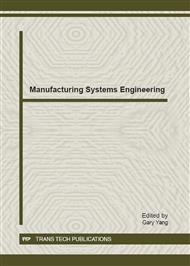p.159
p.165
p.172
p.179
p.186
p.190
p.195
p.200
p.206
A 3G Video Phone Solution for Reducing the Delay of Video Data
Abstract:
This paper analyzes there are some limitations of video data sending for current 3G video phone. A 3G video phone solution for reducing the delay of video data is proposed. The solution proposed in this work mainly consists of software components, according to which hardware needs to be selected. It also gives the video phone terminal structure, block diagram for H.324M video phone terminal, the main software functional blocks and the implementation flow chart of each module. The delay of video data is significantly reduced by adding video phone setting module and I/P frames sending and management module. As well as by the use of software enabling video encoder to dynamically send I frame of the algorithm according to current network status.
Info:
Periodical:
Pages:
186-189
Citation:
Online since:
January 2012
Authors:
Keywords:
Price:
Сopyright:
© 2012 Trans Tech Publications Ltd. All Rights Reserved
Share:
Citation:


